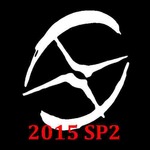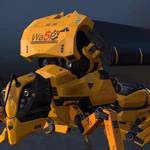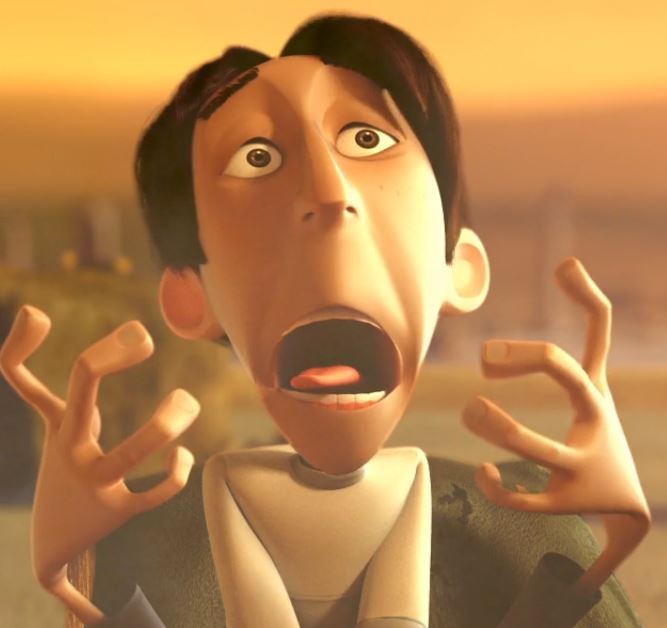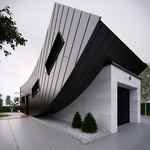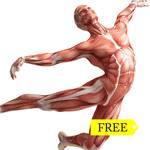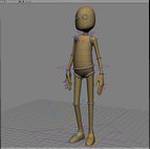Seems to work now though, thanks.
Deform by UV
Plugins linking to this thread: (hide)
 Deform by UV
Deform by UV This addon basically allows to »texture« an object using a second, more
or less flat object. This can be used for some interesting new modeling workflows
because a lot of structures like for example folds, creases, scars, also all sorts
of repetetive patterns are much easier to create using a flat layout first.
It takes a few steps to set this up, but everything is outlined in detail in the si-community thread (see below). Also see the »Deform by UV Plugin« by Constantine Tarasenkov which enables a one-click workflow for these compounds.
local backup: UV-deform.rar
It takes a few steps to set this up, but everything is outlined in detail in the si-community thread (see below). Also see the »Deform by UV Plugin« by Constantine Tarasenkov which enables a one-click workflow for these compounds.
local backup: UV-deform.rar
author site: http://www.matkovic.com / si-community thread
 Plugin for »Deform by UV«
Plugin for »Deform by UV« This is a usability plugin for Anto Matkovic's »Deform by UV« compounds which basically allow to »texture« an object using a
second, more or less flat object.
Two youtube videos recorded by spookymunky1 demonstrate the workflow: Modelling leg bindings in Softimage XSI using Deform by UV Compounds Part 1 and Part 2
local backup: UV-deform.rar
Two youtube videos recorded by spookymunky1 demonstrate the workflow: Modelling leg bindings in Softimage XSI using Deform by UV Compounds Part 1 and Part 2
local backup: UV-deform.rar
author site: http://procedural.tumblr.com / si-community thread
Re: Deform by UV
Ah, I didn't realize you had to go all the way down to the .UVs, I was just trying the projections. Also I guess you have to drag the cacher onto the ICE tree and connect it to the compound in order to get the cloned shape to deform back?
Seems to work now though, thanks.
Seems to work now though, thanks.
Re: Deform by UV
nice you got it to work !
btw it's not new for XSI, it's similar to an old plugin by Kim Aldis. Even only with standard XSI operators, it's possible to do something close to this - cage deform on clone, shrink-wrap on clone, so on. But ICE+UV approach seems to be much faster and precise.
Clone is for comfortable 'in-plane' modeling, 'deform null' is also for placing the 'catcher' into some convenient SRT.
That's how looks setup for this one.

cheers
btw it's not new for XSI, it's similar to an old plugin by Kim Aldis. Even only with standard XSI operators, it's possible to do something close to this - cage deform on clone, shrink-wrap on clone, so on. But ICE+UV approach seems to be much faster and precise.
Clone is for comfortable 'in-plane' modeling, 'deform null' is also for placing the 'catcher' into some convenient SRT.
That's how looks setup for this one.

cheers
Re: Deform by UV
Very cool compounds, Anto! Here I simplified the setup process to one-click solution.
Just put the plugin file attached below to "\Autodesk\Softimage_20##\Application\Plugins" user folder and under Model -> Create -> Poly. Mesh menu you'll find a "Create Deformed by UV mesh" button
There's "Cutline" or "Unfold_CutLine" edge clusters must exist on object to cut the UV mesh (unfortunately "Contour Selection" TE command is not exposed for SDK yet)
Should work on all versions that supports Python
Just put the plugin file attached below to "\Autodesk\Softimage_20##\Application\Plugins" user folder and under Model -> Create -> Poly. Mesh menu you'll find a "Create Deformed by UV mesh" button
There's "Cutline" or "Unfold_CutLine" edge clusters must exist on object to cut the UV mesh (unfortunately "Contour Selection" TE command is not exposed for SDK yet)
Should work on all versions that supports Python
- Attachments
-
- DeformByUV_Plugin.rar
- (1.63 KiB) Downloaded 579 times
Re: Deform by UV
Spasibo, Constantine 
Re: Deform by UV
Just found a few tutorials, thanks to spookymunky!
-
Falam
Re: Deform by UV
It doesn't work with displacement maps though, correct ?Mathaeus wrote:
Hi all,
Here are few simple compounds that can deform mesh by another mesh, using UV projection as a reference. It's very old idea, similar result can be achieved by using XSI Cage deform Op, or Deform by Surface, together with Shrink Wrap. But this one is using UV projection, so distortion is minimized. It doesn't require any special tweaking in order to be fast.
Originally it's created for sliding the mesh on another mesh, but I've used it also for some kind of 'projected modeling'. Mainly for cloth and high poly space-ship hulls.
It definitively isn't one-step method, but I've found it very usable for 'long range' modeling, because seems to be much easier to model 'in plane'. Also, it's easy to reuse the already modelled patterns, again and again. Let's say for modeling a set of space ships of different kind, but still sharing the same style. Deformer can carry deformation too.
It doesn't work very well on meshes with sharp edges.
Sample model is created, following these steps:
1: Polymesh > Subdivision from original (because ICE doesn't take subdivision Geo Approx into account) - this mesh is 'cacher' for deformation
2: Nice, well unfolded UV projection on 'cacher'
3: Disconnecting edges at UV seams on 'cacher'
4: Un simulated ICE tree with compound called 'UV Deform On Cacher'
5: New, 'modeling mesh' - this one is for modeling
6: Clone of 'modeling mesh' - as a final result - this one has another un simulated ICE tree, with compound called 'UV Deform On Mesh'
The last step with cloned mesh is for convenience reason, to allow the all stages of deformation to be visible.
Personally I've found this method a very usable, hope it can help the others a bit.
Take it here
Cheers
Who is online
Users browsing this forum: No registered users and 51 guests



























